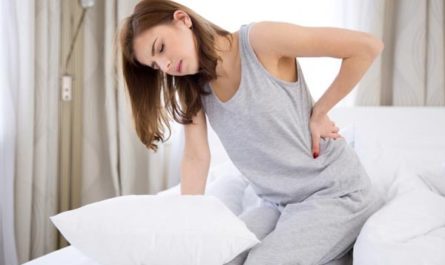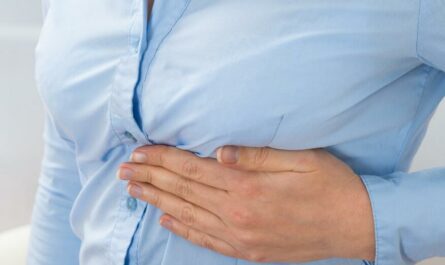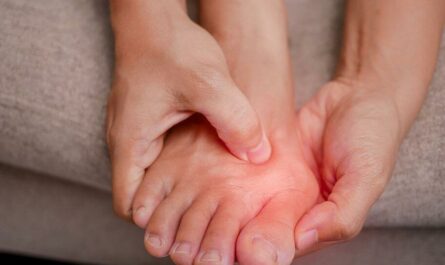Pain under your right breast may be a symptom of a severe health condition because some vital organs are below your right breast, including the gallbladder, right kidney, part of the lung, and liver. Some people worry that this pain is a symptom of heart disease, but the heart is located on the left side of your chest, and the pain below the right breast is often unrelated to the heart attack.
In most cases, sharp pain under your right breast could be connected with injury to a rib or the inflammation of the muscles, bones, or cartilage in the chest. But many other factors, such as heartburn, hiatal hernia, excessive gas, hormonal imbalance, inflamed pleura, and stress, can also cause discomfort in your lower chest area.
If the pain aggravates when you sneeze, cough, or take deep breaths, this could be a sign of rib injuries, costochondritis, or pleurisy. When you have sharp pain radiating to your back, this could signify kidney stones. The pain is accompanied by other symptoms, such as fever, nausea, heartburn, and vomiting, which may signify hiatal hernia, pancreatitis, or gallbladder disease.
Here are 14 common causes of pain or discomfort under your right breast. If you still can not sure what causes your pain after reading this post, you’d better consult your doctor.
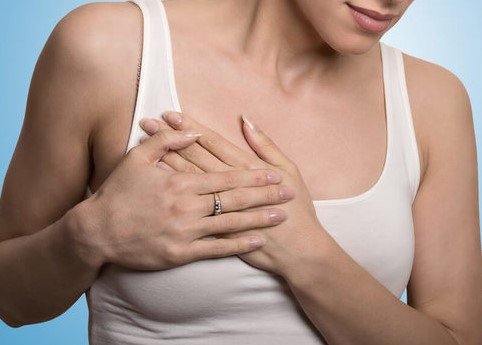
14 Common Causes of Pain Under Right Breast
1. Stress or Anxiety
Anxiety is a reaction to something that scares you, leading to avoidance behavior or strong emotions. You could experience mild or sharp pain under the right breast under psychological or emotional stress. Stress may also affect the body’s digestive system, heart rate, and blood pressure and causes nerves and muscles to tense up.
The main symptoms are a pain in the chest or feeling shortness of breath. It can be recognized by the many other symptoms like heart palpitations, dizziness, nausea, abdominal pain, sweating, trembling, dry mouth, and muscle tension. (1)
To alleviate stress or anxiety-related pain, you can try breathing exercises, yoga, and essential oils for relief. Some workouts, such as long jogging, can also help relax.
2. Trapped Gas

Most people expel gas at least ten times a day. However, trapped gas in the intestines can cause pain when you cannot pass it. The pain may be so intense or constant that it can be mistaken for gallstones, heart disease, or appendicitis.
This pain does not only happens to one location. Its location changes from time to time. For instance, sometimes, we may feel this pain in the chest. It is observed that gas pain does not remain for a long time. You can also face blood in the stool, abdominal pain, or difficulty swallowing.
Due to certain changes, excessive gas and bloating get better. You can limit high-fat and fiber foods. Call your doctor if severe or persistent gas pain is accompanied by bloody stools, vomiting, and weight loss.
3. Heartburn
Another possible cause of pain under the right breast is heartburn. Heartburn is a common problem that can be found in every person. When you lie down right after eating a meal, the pain comes to you because of a full stomach.
The following are the symptoms of heartburn:
- Burning sensation in your chest.
- Severe chest pain with an acidic taste in your mouth, regurgitation of food, or burning in your throat.
- The pain can expand to your shoulders, neck, or arms.
- Sometimes you may get a cold, sweat, shortness of breath, and other symptoms.
- The pain gets worse when bending over or lying down.
Most people manage the symptoms of heartburn with over-the-counter medications and lifestyle changes. However, recurring heartburn that interferes with your daily tasks may be a symptom of another health condition.
See your doctor for proper diagnosis and prompt treatment, especially if you have persistent nausea, difficulty swallowing, and weight loss.
4. Shingles

A viral infection that causes painful rashes, shingles usually appear as a stripe or blisters that wrap around the right or left side of your torso. This condition is caused by the same virus that causes chickenpox.
Once you have had chickenpox, the virus remains dormant in your nerve tissue and may get triggered as shingles.
The common signs and symptoms include:
- Red rashes that begin a few days after discomfort or pain
- Burning, numbness, pain, or tingling sensation
- Sensitivity to touch
- You may have a burn, throb, or stab pain. Often, the rash also appears within days to weeks. These rashes can be constant or come and go with some pain.
- Sometimes, you can have tingling, itching, or prickling skin for several days. After several days, a group of fluid-filled blisters on a red, inflamed skin base. The blisters typically crust over in a week.
- You may have a fever, fatigue, or a headache due to a rash.
You may also experience a headache, fever, sensitivity to touch, and fatigue. If you suspect that you have shingles, see your doctor immediately. The virus can pass to anyone who is not yet immune to chickenpox.
5. Rib Injury
Your rib cage protects the organs in your chest. Any trauma to your rib cages, such as a crush injury from an accident or a fracture from a direct blow, can cause pain around the affected area. It can also lead to tenderness and bruising.
The main symptom of a broken rib is sharp chest pain. When you touch the area where your rib is broken, it will cause severe pain. If you shake your body, the pain can get severe. The pain under the right breast may feel worse when taking deep breaths, sneezing, or coughing.
It is best to seek medical attention immediately for such injuries to prevent further problems that may affect your other organs.
6. Costochondritis
Costochondritis, also known as chest wall pain, is an inflammation of the cartilage near the rib cage and breastbone. Some of the usual causes are a repetitive strain to the breastbone, while some develop this because they have a flu virus or are always coughing.
If the chest area is strained, there is a bigger chance of acquiring this condition. You will know if you suffer from this disease if the pain increases while coughing or sneezing.
The pain can range from mild to excruciating and may cause constant shooting pains that interfere with your daily routine. In most cases, this condition goes away within several weeks. Other symptoms of costochondritis may include:
- Pressure-like, aching, or sharp pain on either side of the breastbone
- Radiating pain to the abdomen or back
- Pain gets worse when you move, breathe deeply, or stretch
Seek immediate medical assistance if you experience severe and persistent pain.
7. Kidney Stones
The kidneys filter waste from your blood and create urine. When minerals and salts in your urine stick together, they form small or big kidney stones. Many stones will easily pass through the urinary tract because they are small, but some may be hard to pass because they have grown too big.
They are usually unnoticed unless they cause pain and blockage. If recognized early, stones do not cause permanent damage. You will need to drink plenty of water to flush out kidney stones from your urinary system. This can be removed through surgery or medications, making the stones stuck in the kidney smaller.
You may experience other symptoms of kidney stones:
- Red, pink, or brown urine
- Severe pain below the ribs and then mild aches
- Pain that radiates to your groin and lower abdomen
- Pain when urinating, foul-smelling urine
- Sharp pain under your left or right breast that comes and goes
- Urinating more often
See your doctor immediately if the pain is severe, accompanied by nausea or vomiting, fever, difficulty passing urine, or blood in the urine.
8. Pleurisy
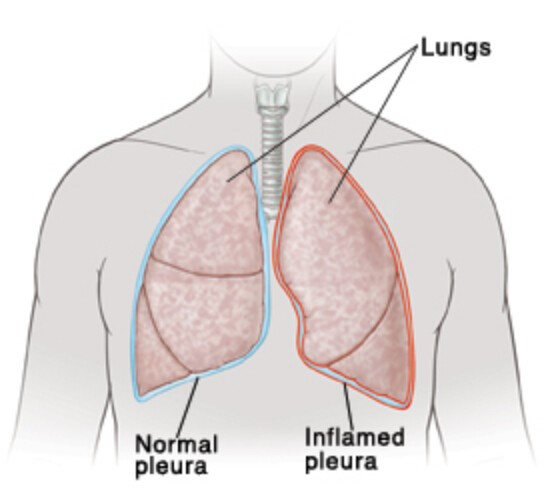
Pleurisy is an inflammation of the pleura – a membrane lining that protects the lungs. This condition can be caused by a viral, bacterial, or fungal infection, certain medication, an autoimmune disorder, rib fracture, or other diseases.
The main reason this condition is called pleurisy is that the lung and chest area is called “pleura.” Like Costochronditis, the pain brought about by this condition may increase whenever there is any movement. For example, if you try to breathe deeply, which causes pain, you may have this condition.
The other symptoms of pleurisy may include:
- Chest pain
- Shortness of breath
- Pain that worsens when you cough, breathe or sneeze
- Fever or a cough in some cases
Call your doctor immediately if you experience intense or unexplained chest pain while breathing. This could signify a problem with your lungs, pleura, heart, or other illness requiring prompt medical attention.
9. Pancreatitis
The pancreas, located behind your stomach on the left side of your body, plays a vital role in digestion and endocrine function. It produces insulin, hormones, and other essential enzymes that help the body break down foods.
There are two forms of pancreatitis. Acute pancreatitis occurs suddenly and lasts for several days. The leading cause of acute pancreatitis is gallstones or excessive alcohol consumption. Chronic pancreatitis often occurs after acute pancreatitis and can last for several years.
There are some symptoms of pleurisy, which are mainly interlinked with chest problems. This can be pain during breathing, shortness of breath, and local tenderness. This pain does not come alone and brings a cavity either in the front or back of the cavity. Due to this cavity, patients suffer back and shoulder pain.
The common symptoms of acute pancreatitis include:
- The pain can occur under your right breast
- Upper abdominal pain that may radiate to your back and left shoulder blade
- Abdominal pain becomes worse after eating
- Nausea, vomiting, fever
- Tenderness in the abdominal area
The symptoms of chronic pancreatitis may include smelly stools and unintended weight loss. Suppose you have persistent abdominal pain, nausea, and vomiting. See your doctor immediately for a clear diagnosis.
10. Cholecystitis
The gallbladder is a small organ that stores bile produced in the liver while not yet used to digest fatty foods. When infection occurs, it causes inflammation and may result in pain under the right breast.
Some symptoms of cholecystitis include:
- Severe pain lasts many hours and is mainly found in the middle or right side of the upper abdomen.
- Pain radiates to the back or right shoulder.
- Sharp pain or dull cramps.
- Nausea, vomiting, or fever
This condition can lead to a severe or life-threatening condition if left untreated. Visit your doctor for proper diagnosis and immediate treatment.
11. Cholecystitis
The inflammation of your gallbladder is also known as cholecystitis. This is also the leading cause of sharp pain under the right breast. The gallbladder is a vital organ that is located below your liver. When the gallbladder is inflamed, you may experience a sharp pain that often radiates to your abdomen, shoulder, and back.
Other symptoms of cholecystitis include nausea, fever, or vomiting. If you suffer from these symptoms and suspect they are caused by cholecystitis, see your doctor immediately. Because this is a potentially life-threatening disease if left untreated.
12. Cholelithiasis (Gallbladder Stones)
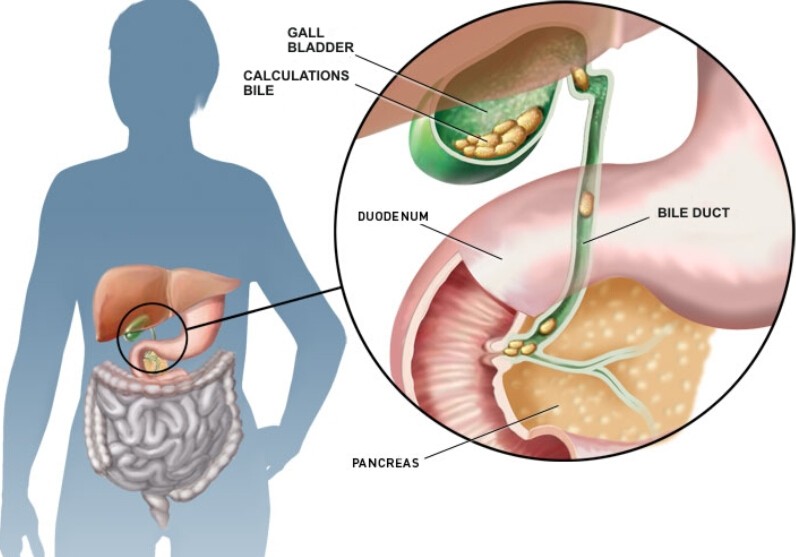
The gallbladder is a tiny organ on the right side of our belly, just below the liver. It is a bag where the bile is stored. Gallbladder stones occur when the bile, which contains cholesterol, pigments, and salts, crystalizes and create gallstones.
Sometimes, some stones would appear in the gallbladder, mainly because of your diet. Generally, Gallbladder diseases are more likely to affect women who suffer from weight problems, gastrointestinal dysfunction, or high cholesterol levels.
Gallbladder pain can start suddenly. You may feel an intense pain lasting up to 15 minutes, then disappears and reappears. The pain can extend into the right side of your arm and back. This situation can last up to 15 hours. Breathing can make the pain worse.
The common symptoms may include:
- Sudden intensifying pain in the upper right portion of the abdomen
- Pain in the right shoulder or between shoulder blades
- Nausea or vomiting
See your doctor if you have any signs or symptoms of gallstones, especially when accompanied by high fever and yellowing skin.
13. Hiatal Hernia
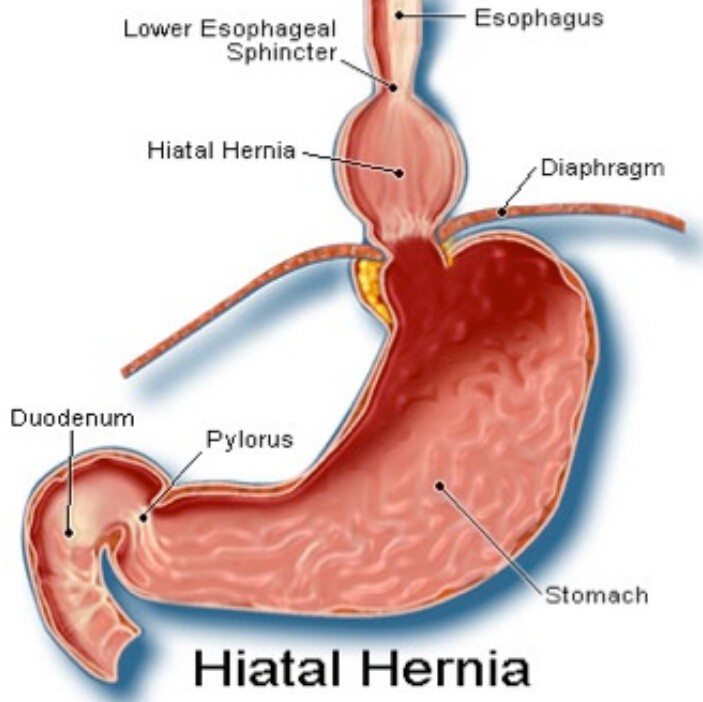
A Hiatal hernia can also cause pain under the right breast. This is known as the protrusion of a part of the stomach, especially when part of the esophagus is larger than its normal size.
The protrusion may be close to the chest area, which explains why pain is felt under the right breast. A small hiatal hernia does not usually cause problems, but a large one can allow acid and food back into the esophagus. Some signs and symptoms of large Hiatal hernias include:
- Belching
- Heartburn
- Shortness of breath
- Abdominal or chest pain
- Feel bloated after eating
- Difficulty swallowing
- Passing black stools or vomiting blood
For proper diagnosis, it is best to visit your doctor. A hiatal hernia can be diagnosed with an X-ray using a barium swallow or an endoscopy.
14. Mastitis
Another possible cause of pain under the right breast is mastitis, an infection of the breast tissue that causes swelling, pain, redness, and warmth. This condition commonly affects breastfeeding women but may also occur in women, not nursing.
Mastitis is a painful process. In it, your breast tissues expand due to inflammation. It most commonly exists in infants. So it develops with time. The symptoms of such an inflamed area are identified by redness, swelling, unusual warmness, and difficulty touching the skin.
These symptoms disappear sometimes and affect only one breast. It is often caused severe illness in females at the initial stage. During this illness, you may feel the flu. This flu can be severe when you are caring for a newborn baby.
The signs and symptoms of mastitis may include:
- Breast swelling
- Feeling ill or have a fever of 38.3 C (101F)
- Warm or breast tenderness
- Burning sensation or pain while breastfeeding
- Skin redness
As soon as you recognize the symptoms of mastitis, contact your doctor for proper diagnosis and treatment.
Pain under the Breast when Coughing or Breathing
Common causes of pain under the breast when coughing or breathing include muscle strain, pleurisy, pneumonia, and costochondritis.
Muscle strain can be due to physical activity, poor posture, or an injury. It is usually felt as a dull ache or soreness under the breast that is worse when coughing or breathing.
Pleurisy is inflammation of the lining of the lungs and chest wall. This can cause sharp or stabbing chest pain that worsens when coughing or taking deep breaths.
Pneumonia is an infection of the lungs that can cause chest pain and difficulty breathing.
Costochondritis is inflammation of the cartilage that connects the ribs to the breastbone. This can cause sharp, stabbing pains in the chest that worsen when coughing or breathing deeply.
Pain under the Breast During Pregnancy
Pregnancy is also a common cause of pain around the breast because pregnancy can cause changes in hormones in women, often leading to swelling and soreness of the breast.
In the middle of pregnancy, the growth and position of the baby in the body can also press the ribs and diaphragm, causing the diaphragm to move upwards. This can also cause pain in the lower side of the breast.
In addition, the growing baby will oppress the mother’s stomach, causing heartburn and acid reflux, a common cause of breast pain during pregnancy. Some pregnant women worry that the pain under the breast is related to breast cancer, but this is often rare.
Pain under the Right Breast That Comes and Goes
Pain under the right breast that comes and goes can be a sign of several different medical conditions. It can be a symptom of an infection, an injury, or a digestive disorder. It can also be a sign of a heart or lung problem.
Infections in the chest or breast area can cause pain that comes and goes. For example, pleurisy can cause sharp, stabbing chest pains that worsen when breathing or coughing.
Broken ribs pulled muscles, and stretched or torn ligaments can all cause pain in the chest. It may come and go, depending on the severity of the injury.
Digestive problems can also cause pain. Gastroesophageal reflux disease (GERD) is a common digestive disorder that can cause pain in the chest. The pain is often described as a burning sensation and may worsen when lying down or after eating.
Is right breast pain a symptom of breast cancer?
Right breast pain is not a common symptom of breast cancer. However, it is possible. Pain in the breast is usually a symptom of other conditions such as mastitis, an infection of the breast tissue, fibrocystic changes, or inflammation of the breast tissue.
Breast cancer itself may cause pain in the breast, although this is relatively rare. Some people with breast cancer may also experience pain in the armpit or the chest wall.
If you are experiencing pain in your right breast or any other area of your breast, it is important to see a doctor for a thorough evaluation.
Treatments for pain under the right breast
These are just some of the possible treatments that people may undergo:
1. Over-the-Counter Medications: Taking an over-the-counter pain reliever such as ibuprofen or acetaminophen can help alleviate pain under the right breast. These medications work by reducing inflammation and providing temporary relief from pain.
2. Rest: Resting the affected area can help reduce pain under the right breast. Getting plenty of rest is important in allowing the area to heal and can also help to reduce the pain.
3. Heat or Cold Therapy: Applying a hot or cold compress to the affected area can help to reduce the pain. Hot compresses can help to increase circulation and reduce inflammation. Cold compresses can help to reduce swelling and numb the area to reduce pain.
4. Herbal Remedies: Herbal remedies such as comfrey, turmeric, ginger, and chamomile can help to reduce pain and inflammation under the right breast. These herbs can be taken orally or applied as a topical ointment to the affected area.
5. Exercise: Gentle exercises such as stretching and light aerobic activities can help to reduce pain under the right breast. Exercise can help to increase circulation and reduce the tension in the affected area.
6. Massage: Massaging the affected area can help to reduce pain and inflammation under the right breast. Massaging the area can help to increase circulation and reduce tension in the affected area.
7. Acupuncture: Acupuncture is an ancient Chinese medical practice that involves inserting thin needles into the skin at specific points to reduce pain and inflammation. Acupuncture can be beneficial for reducing pain under the right breast.
When to See a Doctor
There are some severe symptoms you must not ignore. Experiencing these symptoms may mean that a person requires immediate medical attention.
- Pains under your breast persist for a long time.
- The pain spreads to the other parts of the chest.
- Sharp and burning pain that feels like something is squeezing your chest.
- Extremely low or extremely high blood pressure.

